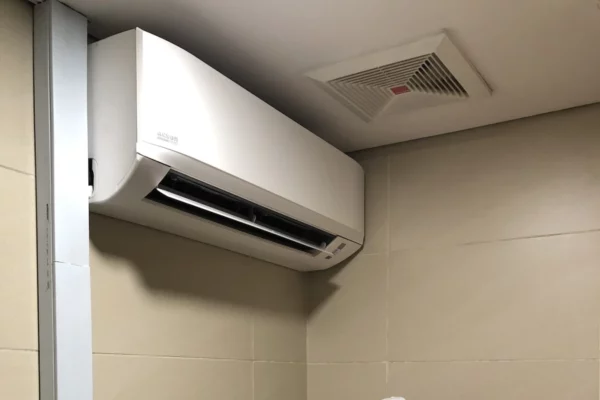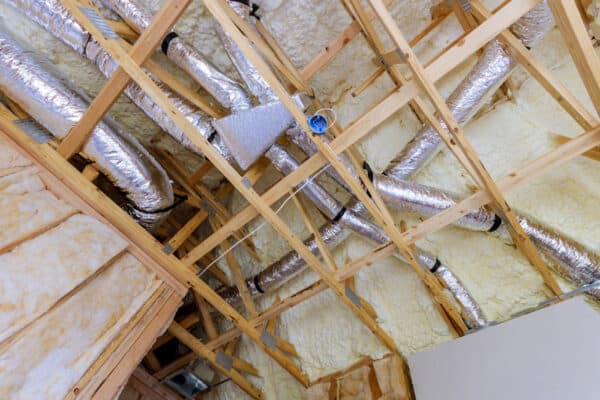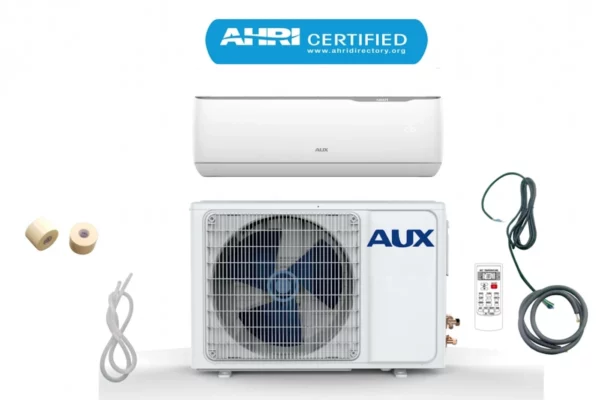Do Mini Splits Have Filters to Clean the Air?
Air conditioners use a filter to block dust and other small particles. Mini splits are different from the central air conditioner that most people are used to and people are asking do mini splits have filters. So, I did further research.
Mini splits do have filters. Typical wall-mounted mini splits have two washable plastic mesh filters inside the indoor unit. Other types of mini splits such as the ceiling cassette and the ceiling concealed have synthetic fiber filters that are washable 3-4 times before they need to be replaced.
Some people think that the small mini splits don’t have filters to clean the air. However, they do have filters but their filters are not as good as the filter in conventional central air conditioners.
Where is the Filter in a Mini Split?
Mini splits have different types of indoor units. The most common type of mini split indoor unit is the wall-mounted type. The filter of the wall-mounted type mini split is located at the front of the mini split.

To access the filter of a wall-mounted mini split, simply pull open the front cover using both hands. See the below photo on where to pull the mini split cover.


You may need to use some strength, especially for the first time. The cover is quite tight.
If you have a ceiling cassette type of mini split indoor unit, the filter is located inside the front panel that is exposed below the ceiling. You don’t have to access the space above the ceiling to reach the filter.
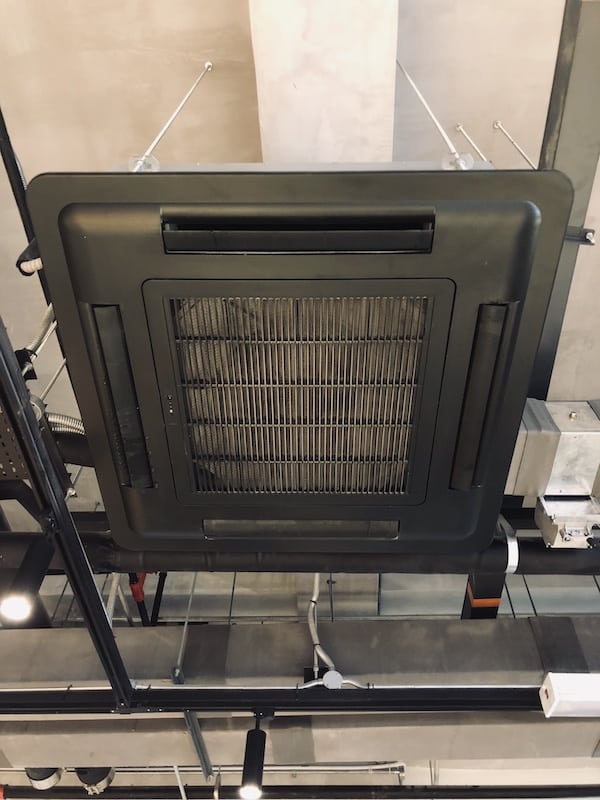
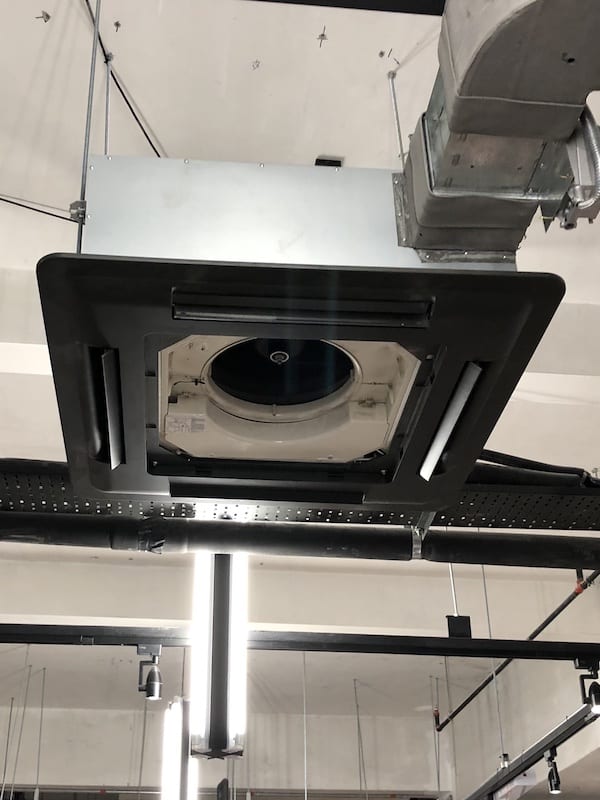
The filter section of a ceiling cassette mini split usually has hinges that you can press to open the panel. Some of them can be removed entirely as shown in the above photo.
As for the ceiling-concealed type of mini split indoor unit, the filter is located right before the cooling coil just like the central air conditioner.
Does a Mini Split Condenser Have a Filter?
The condenser or outdoor unit of the mini split doesn’t have a filter. At most, they have a steel mesh at the back of the condenser but it is used to protect the condenser coil from damage.
Mini splits condenser doesn’t have a filter because the outdoor air is less dusty than the indoor air. We all have static charges that make dust stick onto our skin and clothes. Thus, the indoor unit is handling more dust than the outdoor unit.
How Often Should You Change the Filter of a Mini Split?
You do not need to change the filter of a mini split if it is a wall-mounted type with the washable fine mesh filter. The plastic mesh filter can last as long as it isn’t damaged.
On the other hand, the filter of the ceiling cassette and the ceiling concealed mini split is recommended to change after you’ve washed it 3-4 times.
Most of the time, the filter of a mini split needs to be cleaned once every two months. So, if you have a synthetic fiber filter, you’ll need to change the filter about once every half of a year.
However, how often you should change and clean the filter of a mini split depends on the air quality in your place. I’ve seen a building that is very close to a construction site needs to have its air conditioner filter cleaned once every two weeks.
How to Clean the Filter on a Mini Split?
You just need to use water to clean the filter of a mini split. No need to put any special chemicals on it. You may use soap and other detergents but make sure to wash it off thoroughly.
I just use low-pressure water to blast out the dust from the back of the filter. These plastic mesh filters are quite tough. They are not tearing off easily.
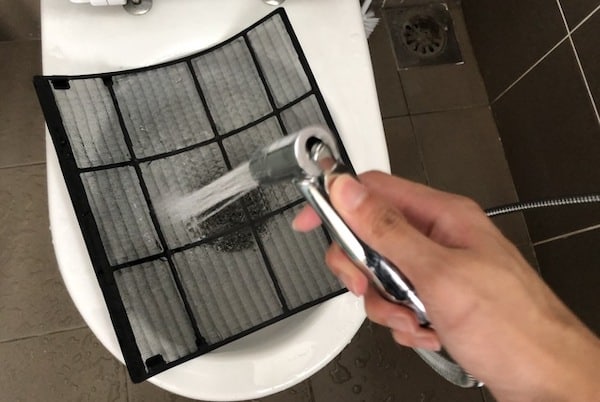
If you are handling a synthetic fiber filter, you may soak the filter in water and pull it out. Repeat a few times until the filter turns back to a white/grey color. Don’t brush the filter as you may damage the media.
In case you have a pocket/bag filter, it is not washable. So, you’ll have to change it every time it’s dirty.
Do Mini Splits Purify the Air?
Purifying the air means that dust and odor are removed. Depending on how pure you want the air to be, mini splits do purify the air to a certain level of cleanliness.
Nowadays, many mini splits come with a green tea, a carbon filter or a PM2.5 filter which are much finer than the basic plastic mesh filter and these filters are able to remove odor.
However, typical mini splits are incomparable to air purifiers which do only one job, which is to purify the air. If you have an allergy or asthma, getting an air purifier to improve indoor air quality is better than relying on your mini splits.
“Generally, the filter on air conditioners are meant to protect the air conditioner itself rather than to provide clean air.”
Do Mini Splits Have HEPA Filters?
Mini splits do not have HEPA filters. A HEPA filter is bulky with a wide body and deep filtration materials. Thus, it can’t fit inside a slim mini split.
However, if we are talking about a custom-made ceiling concealed mini split, it may be able to slot in a HEPA filter. Else, a mini split can’t have a HEPA filter.
However, some mini splits can be upgraded to a higher-grade filter that is close to a HEPA filter. To learn more, check out my post about mini split HEPA filters here.
Do Mini Splits Filter Smoke?
Mini splits with a basic plastic mesh filter can’t filter smoke but dust only. But, mini splits with a green tea filter, a carbon filter, or a PM2.5 filter do filter smoke.
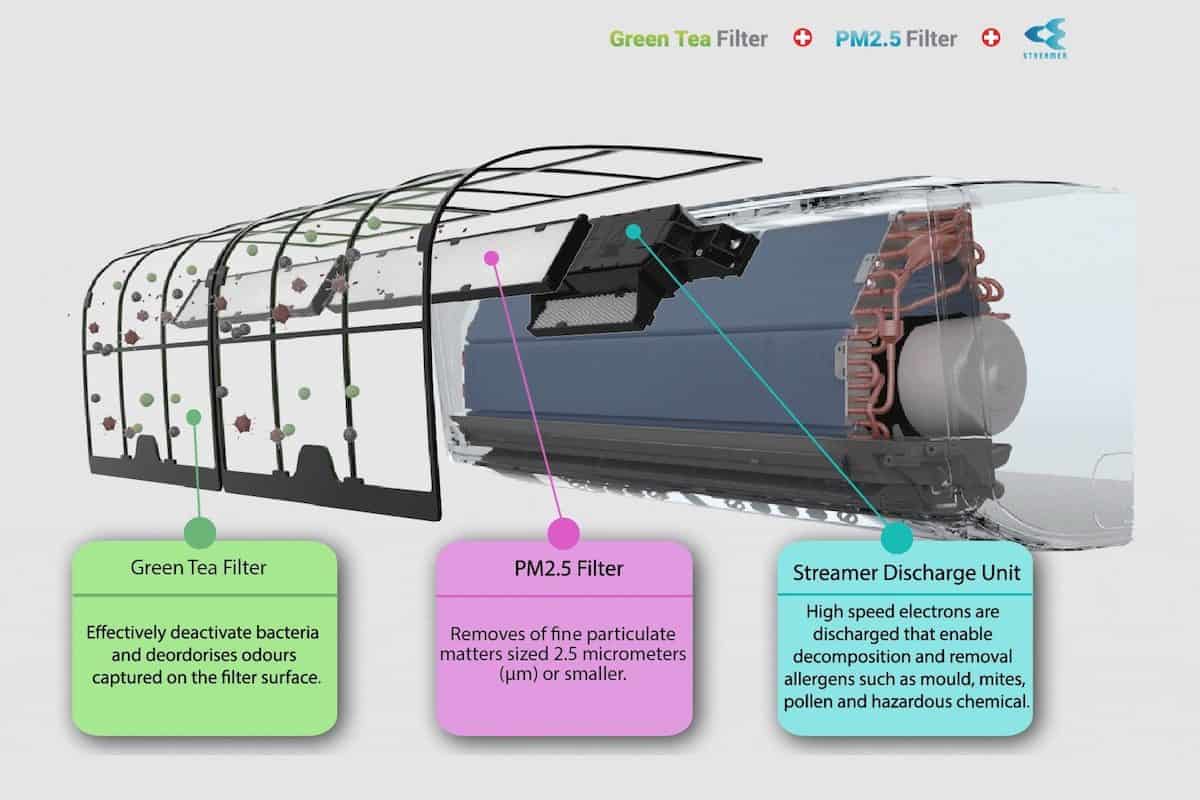
Do Mini Splits Improve Air Quality?
Generally, mini splits do improve air quality, especially with an ionizer and a better filter such as a green tea filter or a PM2.5 filter. However, they are incomparable with the high MERV media filters on conventional central air conditioners.
Nevertheless, mini splits have the option for you to opt for a ceiling-concealed type indoor unit which can be installed with high MERV filters that are on par with conventional central air conditioners.
Lastly, consider my Mini Split (eBook) if you want to know how can you use Mini Split in your house. If you still have doubt or not feeling confident enough, feel free to consult me.
Consultation Service
Ask me for HVAC advice such as brand selection, best model, benefits, features, placement, duct size, grille size, how to design, design check, verification and other HVAC related queries.
If you have anything to add (or ask) about this topic, leave a comment down below!




